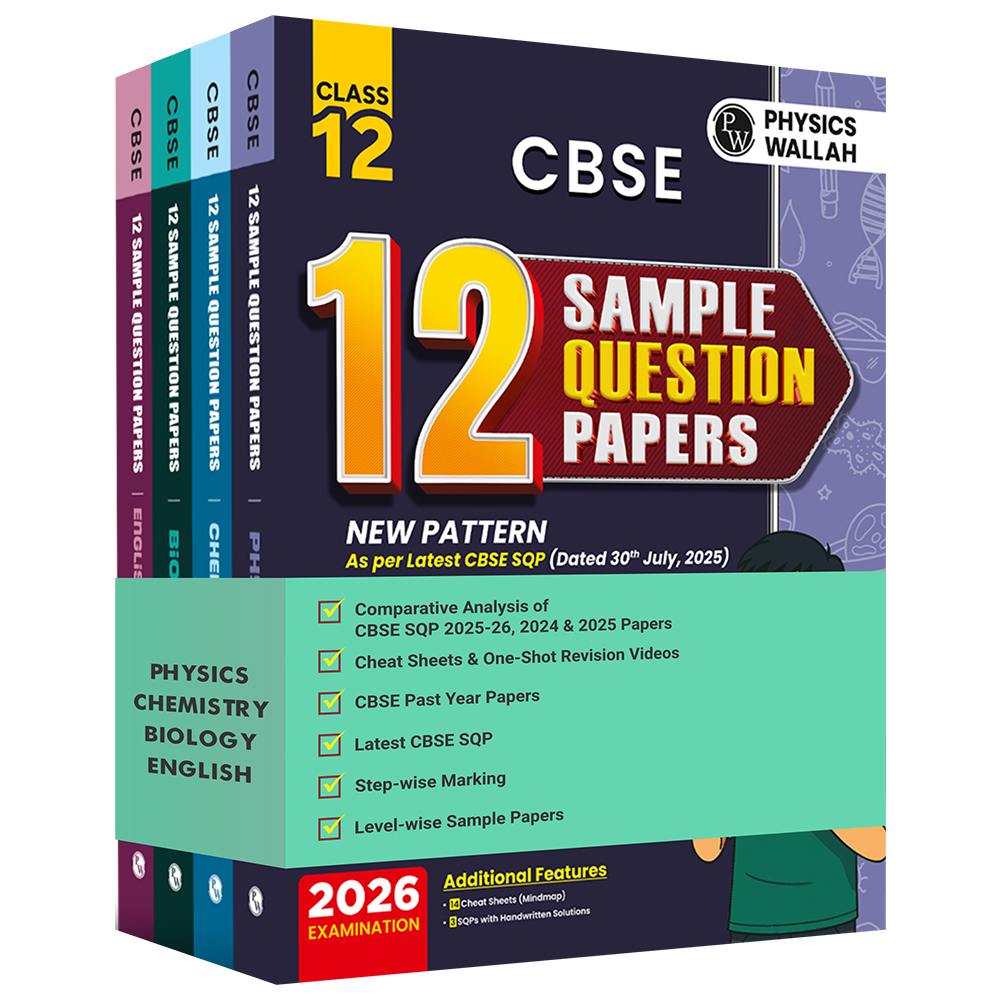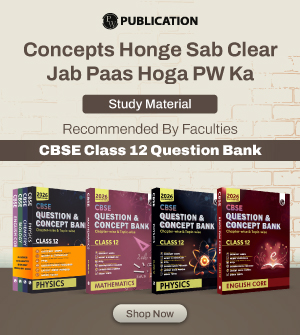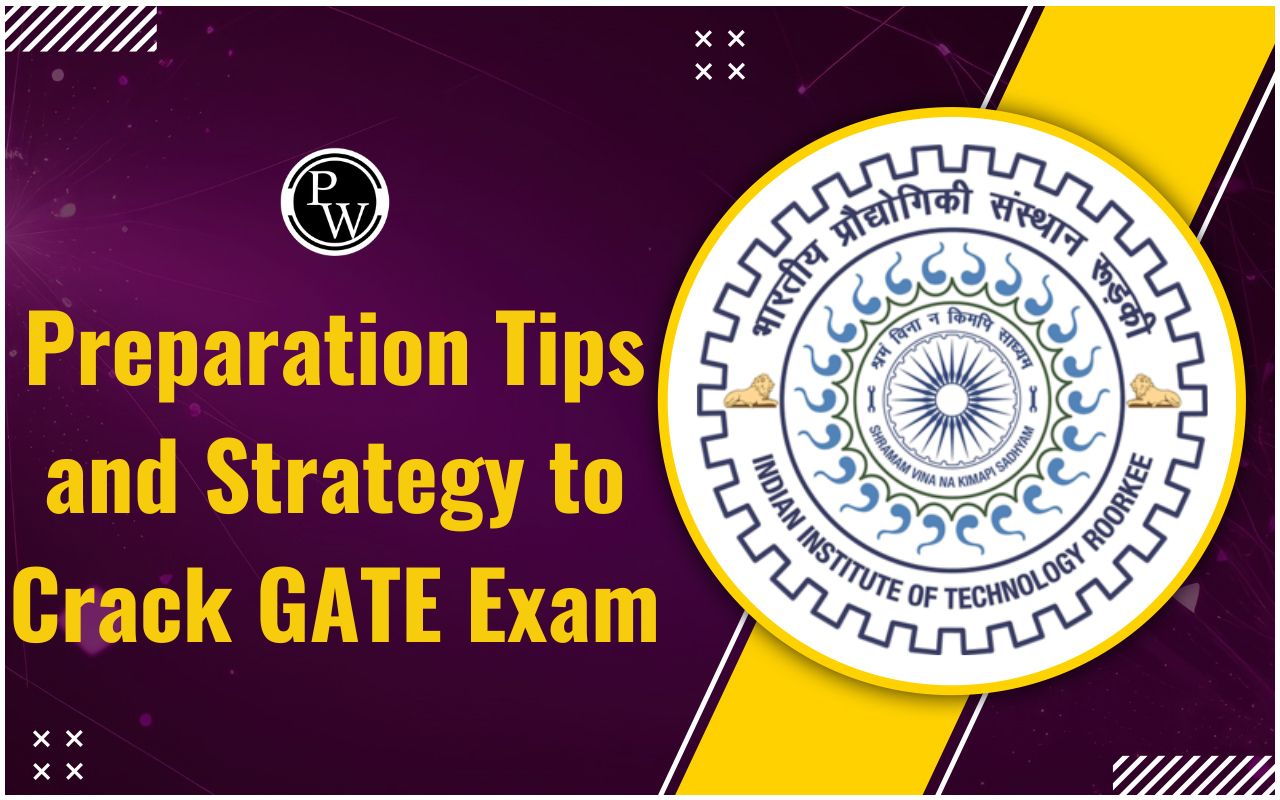CBSE Class 12 Chemistry Important Questions for Board Exam

CBSE Class 12 Chemistry Important Questions:- The CBSE Class 12 Chemistry exam is scheduled for Thursday, 27th February 2025, from 10:30 AM to 01:30 PM. To excel in this subject, students should focus on important questions for Class 12 Chemistry that cover key topics. These questions are essential for preparing not only for the CBSE Board exams but also for competitive exams like NEET and JEE.
By practising chemistry important questions, students can strengthen their understanding of concepts, improve problem-solving skills, and boost their confidence. Chapter-wise practice helps manage time better and enhances exam techniques. With detailed answers provided, tackling complex topics becomes much easier. Regular practice of these important questions for Class 12 Chemistry can lead to higher scores and better performance in competitive exams.
Check out:
CBSE Class 12 Chemistry Important Questions for Board Exam
Question 1. Which point defect in crystals does not alter the density of the relevant solid? (Delhi) 2009
Answer: Frenkel defect.
Question 2. Which point defect in its crystal units alters the density of a solid? (Delhi) 2009
Answer: Schottky defect.
Question 3. Which point defect in its crystal units increases the density of a solid? (Delhi) 2009
Answer: Metal excess defect increases the density of a solid. It is due to presence of extra cations in the interstitial sites.
Question 4. Some liquids on mixing form ‘azeotropes’. What are ‘azeotropes’? (Delhi 2014)
Answer: The liquid mixture having a definite composition and boiling like a pure liquid without change in composition is called as azeotrope.
Question 5. What type of intermolecular attractive interaction exists in the pair of methanol and acetone? (Delhi 2014)
Answer: Solute-solvent dipolar interactions exist in the pair of methanol and acetone.
Question 6. Define ‘rate of a reaction’. (Delhi 2010)
Answer: Rate of a reaction: Either, The change in the concentration of any one of the reactants or products per unit time is called rate of a reaction. Or, The rate of a chemical reaction is the change in the molar concentration of the species taking part in a reaction per unit time.
Question 7. Define ‘order of a reaction’. (All India 2011)
Answer: The sum of powers of the concentration of the reactants in the rate law expression is called the order of reaction.
Question 8. Define ‘activation energy’ of a reaction. (All India 2011)
Answer: The minimum extra amount of energy absorbed by the reactant molecules to form the activated complex is called activation energy. The activation energy of the reaction decreases by the use of catalyst.
Question 9. Express the rate of the following reaction in terms of the formation of ammonia :
N2(g) + 3H2(g) → 2NH3(g) (Comptt. All India 2013)
Answer: Important Questions for Class 12 Chemistry Chapter 4 Chemical Kinetics Class 12 Important Questions 1
Question 10. If the rate constant of a reaction is k = 3 × 10-4 s-1, then identify the order of the reaction. (Comptt. All India 2013)
Answer: S-1 is the unit for rate constant of first order reaction.
Check out: CBSE Class 12 Science Stream Sample Papers
Question 11. Write the unit of rate constant for a zero order reaction. (Comptt. All India 2013)
Answer: Mol L-1 S-1 is unit of rate constant for a zero order reaction.
Question 12. Define rate of reaction. (Comptt. Delhi 2016)
Answer: The change in concentration of reactant or product per unit time is called rate of reaction.
Question 13. Define rate constant (K). (Comptt. All India 2016)
Answer: Rate constant. It is defined as the rate of reaction when the concentration of reaction is taken as unity.
Question 14. Define the term ‘Tyndall effect’. (Delhi 2009)
Answer: Tyndall effect : When a beam of light is passed through a colloidal solution and viewed perpendicular to the path of the incident light, the path of light becomes visible as a bright streak. The illuminated path is called Tyndall cone and the phenomenon is called Tyndall effect.
Question 15. What is an emulsion? (Delhi 2010)
Answer: Emulsion is liquid-liquid colloidal system.
Question 16. Give an example of ‘shape-selective catalyst’. (Delhi 2010)
Answer: The catalyst reaction in which small sized molecules are absorbed in the pores and cavities of selective adsorbents like zeolites is known as shape-selective catalysis.
Question 17. Define ‘electrophoresis’. (Delhi 2011)
Answer: Electrophoresis : When electric current is passed through a colloidal solution, the positively charged particles move towards cathode while negatively charged particles move towards anode where they lose their charge and get coagulated. The phenomenon is known as Electrophoresis.
Question 18. What is meant by ‘shape-selective catalysis’ of reactions? (All India 2011)
Answer: The catalyst reaction in which small sized molecules are absorbed in the pores and cavities of selective adsorbents like zeolites is known as shape-selective catalysis.
Question 19. Why is the froth flotation method selected for the concentration of sulphide ores? (Delhi 2009)
Answer: Because the method is based on preferential wetting properties with the frothing agent and water, and the sulphide particles of ore stick to the oil droplets and rise in the form of froth.
Question 20. What is meant by the term ‘pyrometallurgy’? (All India 2009)
Answer: The process of extraction of metal by heating the metal oxide with a suitable reducing agent is called pyrometallurgy.
Question 21. Differentiate between a mineral and an ore. (All India 2011)
Answer:
-
Mineral: The naturally occuring chemical substances in form of which the metals occur in the earth along with impurities are called minerals.
-
Ore: The mineral from which metal can be extracted conveniently and economically is called an ore.
Thus, all ores are minerals but all minerals are not oies.
Question 22. What type of ores can be concentrated by magnetic separation method? (All India 2011)
Answer: Magnetic separation method is used when either the ore or the impurities associated with it are magnetic in nature.
Example: Chromite (FeO.Cr2O3) -A an ore of chromium
Magnetite (Fe3O4) → an ore of iron.
Question 23. What is the ‘coagulation’ process? (All India 2009)
Answer: The process of settling of colloidal particles is called coagulation or precipitation of the solution.
Question 24. Why is it that only sulphide ores are concentrated by ‘froth floatation process’? (All India 2011)
Answer: As sulphide ores are wetted with pine oil and their particles come up along with froth, while their gangue (impurities) particles are wetted with water so such particles settle down.
Question 25. What is the role of graphite in the electrometallurgy of aluminium? (Delhi 2012)
Answer: Graphite acts as an anode in the electro metallurgy of aluminium.
Check out: CBSE Class 12 Chemistry Sample Question Papers
Question 26. Give an example of linkage isomerism. (Delhi) 2010
Answer: Linkage isomerism : When more than one atom in an ambidentate ligand is linked with central metal ion to form two types of complexes, then the formed isomers are called linkage isomers and the phenomenon is called linkage isomerism.
[Cr(H2O)5(NCS)]2+ Pentaaquathiocyanate chromium (III) ion
[Cr(H2O)5(NCS)]2+
Pentaaquaisothiocyanate chromium (III) ion
Question 27. Give an example of coordination isomerism. (Delhi 2010)
Answer: Example : [Co(NH3)6] [Cr(CN)6] and
[Cr(NH3)6] [CO(CN)6]
Question 28. Give an example of ionization isomerism. (Delhi 2010)
Answer: Example : [Pt (NH3)5 (Br)3] SO4 and
[Co (NH3)5 (SO4)] Br
Question 29. Give IUPAC name of ionization isomer of [Ni(NH3)3NO3]Cl. (Comptt. All India 2012)
Answer: IUPAC name : Triammine nitrato nickel (III) chloride
Question 30. Write down the formula of : Tetraamineaquachloridocobalt(III) chloride. (Comptt. All India 2012)
Answer: [Co(NH3)4(H2O)Cl]Cl2
Question 31. Indicate the types of isomerisms exhibited by the complex [Co(NH3)5 (NO2)] (NO3)2. (At. no. Co = 27) (Comptt. All India 2012)
Answer: It shows ionisation isomerism and linkage isomerism.
Question 32. What type of bonding helps in stabilishing the a-helix structure of proteins? (Delhi 2013)
Answer: a-helix formation -» Intramolecular hydrogen bonding.
Question 33. Which complex ion is formed when undecomposed AgBr is washed with hypo solution in photography? (Comptt. All India 2013)
Answer: Sodium dithiosulphato argentate (I) complex is formed
Question 34. Give IUPAC name of the ionization isomer of [Ni(NH3)3NO3]Cl. (Comptt. All India 2013)
Answer: IUPAC name : Triammine chlorido nickel (II) nitrate [Ni(NH3)3NO3]Cl
Question 35. Give two examples of ligands which form coordination compounds useful in analytical chemistry. (Comptt. All India 2013)
Answer: Examples :
(i) EDTA (Ethylene diamine tetra-acetic acid)
(ii) Dimethyl glyoxime (DMG)
Question 36. Give the IUPAC name of the following compound : (Delhi 2009)
Answer:
IUPAC name : 2-Bromo-3-methyl-but-2-ene-1-ol
Question 37. Give the IUPAC name of the following (All India 2009)
Answer:
Question 38. Why is an alkylamine more basic than ammonia? (Delhi 2009)
Answer: Due to electron releasing inductive effect (+1) of alkyl group, the electron density on the nitrogen atom increases and thus, it can donate the lone pair of electrons more easily than ammonia.
Question 39. Arrange the following compounds in an increasing order of basic strengths in their aqueous solutions : NH3, CH3NH2, (CH3)2NH, (CH3)3N (All India 2009)
Answer: Basicity order (due to stability of ammonium cation)
(CH3)2 NH > CH3NH2 > (CH3)3 N > NH3
Question 40. Give the IUPAC name of H2N — CH2—CH2—CH = CH2. (Delhi 2010)
Answer: IUPAC name : But-3-ene-1-amine
Check out: CBSE Class 12 Competency Based Question Bank
Question 41. Arrange the following compounds in an increasing order of their solubility in water : C6H5NH2, (C2H5)2NH, C2HSNH2 (Delhi & All India 2011)
Answer: C6H5NH2 < (C2H5)2NH < C22H5NH2
Question 42. Give a chemical test to distinguish between ethylamine and aniline. (All India 2011)
Answer: Ethylamine and aniline :
By Azo dye test: It involves the reaction of any aromatic primary amine with HNO2(NaNO2 + dil. HCl) at 273-278 K followed by treatment with an alkaline solution of 2-naphthol when a brilliant yellow, orange or red coloured dye is obtained.
Question 43. Arrange the following in the decreasing order of their basic strength in aqueous solutions: CH3NH2, (CH3)2 NH, (CH3)3N and NH3 (Delhi 2012)
Answer: (CH3)2 NH > CH3NH2 > (CH3)3 N > NH3
Question 44. Arrange the following in increasing order of their basic strength in aqueous solution: CH3.NH2, (CH3)3N, (CH3)2NH (Delhi 2013)
Answer:
Question 45. Give an example of elastomers. (Delhi, All India 2009)
Answer: Buna-S, Buna-N.
Question 46. What does the part ‘6, 6’ mean in the name nylon-6, 6? (Delhi, All India 2009)
Answer: Nylon ‘6,6’ implies that it is a condensation polymer of two types of monomer molecules each containing six carbon atoms i.e. adipic acid (HOOC (CH2)4 COOH) and hexamethylenediamine (H2N CH2 CH2 CH2 CH2 CH2 CH2 NH2)
Question 47. What is the primary structural feature necessary for a molecule to make it useful in a condensation polymerization reaction? (All India 2009)
Answer: The presence of two bifunctional monomer molecules undergo condensation with the loss of simple molecule of water, alcohol to form dimer.
Question 48. What does the designation ‘6, 6’ mean in the name nylon-6, 6? (All India 2010)
Answer: Since both adipic acid and hexamethylenediamine contain six carbon atoms each.
Question 49. What is meant by ‘copolymerisation’? (All India 2010)
Answer: When two or more different monomers are allowed to polymerize together, the product formed is called a copolymer and the process is called copolymerisation.
Question 50. What are biodegradable polymers? (Delhi 2010)
Answer: Biodegradable polymers : All those biopolymers which disintegrate by themselves in biological systems during certain period of time by enzymatic hydrolysis are called biodegradable polymers.
Study Tips on CBSE Class 12 Chemistry
-
Understand the CBSE 12 Chemistry Syllabus: Divide the syllabus into Physical, Organic, and Inorganic Chemistry. Prioritise important topics like Electrochemistry, Chemical Kinetics, Coordination Compounds, Aldehydes, Ketones, and Biomolecules.
-
Practise Important Questions: Solve the most important questions of Chemistry Class 12 to understand the pattern of questions asked in CBSE exams. Focusing on class 12th Chemistry important questions will help reinforce your knowledge of key concepts.
-
Chapter-Wise Revision: Use a systematic approach to revise each chapter. Start with conceptual chapters like Electrochemistry and move to memory-based ones like P-block Elements.
-
Time Management: Set aside dedicated time for solving the most important question of Chemistry Class 12. Practice past papers and mock tests for better time management.
-
Focus on NCERT: Pay attention to NCERT textbooks as many questions are directly picked from them. Highlight and revise NCERT’s Chemistry important questions regularly.
-
Understand Reaction Mechanisms: For Organic Chemistry, focus on understanding mechanisms and practising name reactions.
-
Formulae Practice: Memorise key formulas from Physical Chemistry and practise numerical problems daily.
-
Detailed Answers: Use solutions to the important questions for Class 12 Chemistry to strengthen your problem-solving skills. These answers help clarify tricky concepts and improve accuracy.
Check out: CBSE Class 12 Chemistry Chapter-Wise PYQs
CBSE Class 12 Question Bank for All Subjects
CBSE Class 12 Chemistry Important Questions FAQs
-
What are the most important chapters in CBSE Class 12 Chemistry?
The most important chapters include electrochemistry, chemical kinetics, coordination compounds, aldehydes and ketones, biomolecules, and p-block elements. -
What is the date of the CBSE Class 12 Chemistry exam for 2025?
The Chemistry exam is scheduled for Thursday, 27th February 2025, from 10:30 AM to 1:30 PM. -
How can I prepare for Class 12 Chemistry board exams?
Focus on NCERT textbooks, practise numerical problems, revise key reactions, and solve important questions for Class 12 Chemistry regularly. -
What are some of the chemistry important questions for Class 12 exams?
Questions on Faraday's laws, rate of reaction problems, name reactions in organic chemistry, and periodic trends in inorganic chemistry are often asked. -
Is NCERT sufficient for CBSE Class 12 Chemistry?
NCERT is essential for understanding concepts and answering most board exam questions. However, practising extra class 12th chemistry important questions can improve performance.











